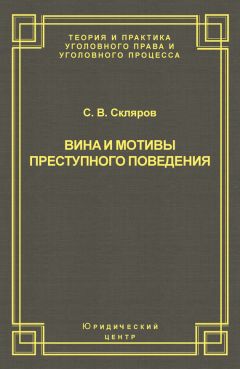Festinger L. A. A theory of Cognitive Dissonance. – Evanston, 1957.
Fiedler B. Function der Psychologie in der Lehrerausbildung. Dokt. Diss. Braunschweig, – 1976.
Ford M. Motivating humans: goals, emotions and personal agency beliefs. – N.Y., 1992.
Freeman G. Physiological Psychology. – Toronto,N.Y., London, 1948.
French E. G., Thomas F. N. The relation of achievement motivation to problem – solving effectiveness // Journal of Abnormal and Social Psychology. – 1958. – 56.
Freud S. New Introductory Lectures on Psycho-Analysis. – N.Y., 1933.
Friedlender F. Relationships between the importance and the satisfaction of various environmental factors // Journal of Appl. Psychol.– 1965.– V. 49.
Furnham A. Many sides of the coin: the psychology of money usage // Personality and individual Differences. – 1984. – V. 5.
Gestmann S. Problemy teorii emocji. – Torun, 1963.
Guilford J.P. General Psychology. – N.Y., 1956.
Heider F. The gestalt theory of motivation. Jones M. R. (ed.). Nebraska symposium on motivation. V. 8, – Lincoln: University of Nebraska Press, 1960.
Hall G. Psychology of Motivation. – N.Y., 1961.
Harlow H.F. Mice, monkeys, men and motives // Psychological Rev. – 1953. – V. 60.
Harlow H. F., Harlow M. Learning to love // Am. Sci. – 1966.– V. 55, N3.
Hassenforder J. Loisirs et education. Lecourrier de la recherche pedagogique. – Paris, 1967, N30.
Hebb D.O. The Organization of Behavior. -N.Y., 1949.
Heckhausen H. Motivationsanalyse der nspruchsniveau. Setzung. Psychologische Forschung.l – 955, 25.
Herzberg F., Mausner В., Snyderman B.B. The motivation to work. – N.Y., 1959. Hetzer H. Kind und Schaffen. – Jena, 1931.
Hilgard E. R. Introduction to Psychology.N.Y., 1957.
Hoppe F. Erfolg und Miserfolg // Psychol. Vorschung. – 1930, -14.
Horowitz I. A. Effect of choice and locus of dependence on helping behavior // Journal of Personality and Social Psychol. – 1968.– 8.
Ilg H., Sicora W. Verfaren zur Ermittlung von Motiven der Sporttatigkeit. Untersuch– ungsmethoden in der Sportpsychologie. – Berlin, 1983. Janis I. Victim of groupthink. – Houghton Mifflin, 1972.
Jones E. E., Gerard A. B. Foundation of social psychology. – N.Y., 1967.
Jones E. E., Nisbett R. E. The actor and the observer: divergent perception of causes of behavior. Attribution: perceiving the causes of behavior. Morristown. – N.Y., 1972.
Kelley H.H. Attribution in social interaction. – N.Y., 1971.
Kelly G. A. The Psychology of Personal onstructs. V. 1, 2. – N.Y., 1955.
Kleinbeck U. Motivation and Berufswahl. Gottingen etc. Vert. Psychol., 1975.
Kohlberg L. The development of children orientations toward a moral order. Univer. of Chicago, 1963.
Krech D, Kruchfleld R. S. Individual in Society. – N.Y., 1962.
Larcebeau S. Etude d,un questionnaire d.interets pour garsons de 10 a 12 ans. Bull. Lust, d,orientation professionales. – 1958.– V. 4.
Latane В., Darley J. M. The Unresponsive Bystander: Why Does not he help? – N.Y., 1970.
Lewin K. Vortsatz, Wille und Bedurfnis. – Berlin, 1926.
Lewin K. Field theory and experiment in social psychology // Am. Journal Sociology. -1939.– V. 44.
Lewin К. Grundzuge der topologische Psycho-logie. – Bern, 1969.
Likert R. Motivation: the core of management. – N.Y., 1953.
Lynn R. The Secret of Miracle Economy: Different national attitudes to competitiveness and money. – London, 1991.
Maccoby E., Masters J. S. Attachment and dependency. Carmishaels Manual of Child Psychology. – N.Y., 1970, V. 1368.
McDougall W. Outline of psychology. – N.Y., 1923.
McGregor D. The human side of enterprise. – N.Y., 1960.
Mc Clelland D. C. Assessing Human Motivation. – N.Y., 1971.
Madsen К. В. Modern Theories of Motivation. Copenhagen. Verl. Psychol., 1959.
Maslow A. H. Motivation and Personality. – N.Y., 1954.
Mehrabian A. Verbal and nonverbal interaction of strangers in a waiting situation // Journal of Experim. Research in Personality. – 1971. – 5.
Meyer W.-U. Leistungmotiv und Ursachener-klarung von erfolg und Miserfolg. – Stittgart, 1973.
Meyer W.-U., Heckhausen H., Kemmler L. Validierungskorrelate der inhaltsanalitisch erfasten Leistungmotivation guter und schwacher Schuler des dritten Schuljahres // Psychol. Forschung. – 1965. – 28.
Miller N. E. An experimental investigation of aquired drives // Psychological Bulletin. – 1941. – 38.
Montgomery К. С The effect of activity deprivation upon exploratory behavior // Journal Сотр. Physiol. Psychol. – 1953,– V. 46.
Mowrer О. Н. Preparatory set (expectance) a determinant in motivation and learning // Psychol. Rev. – 1938. – V. 45, N 1.
Mowrer О. Н. Learning Theory and behavior. – N.Y., 1960.
Murrey H. A. Exploration in Personality. – N.Y., 1938.
Nebraska Symposium on Motivation. Lincoln: Univ. Neb. press, 1953. V. 1; 1955. V. 3.; 1959.– V. 7; 1960. V. 8; etc.
Nutten Y. R. Motivation, Planning and Action // A Relational Theory of Behavior Dynamics. – Hillsdale, 1984. Ch. 5.
Ovsiankina M. Wiederaufnahme interbroche-ner Handlungen // Psychol. Forschung. -1928.– V. 11.
Pelman В., Hartman E.A. Burnout: summery and future research. Human relations. – 1982.-35,4.
Peters R. S. The Concept of Motivation. – London, 1967.
Pieron A. Emotions in animals and men. In: Reymert M.L. (ed.). Feelings and Emotions.
The Wittenberg Simposium. – Worcester, 1928.
Prince M. Women, men and moneystyles. J. of Economic Psychol. – 1993. – V. 14.
Ray nor J. O. Future orientation and motivationof immediate activity: An a laboration of the theory of achivement motivation. – Psychol. Rev. – 1969. – V.76.
Reikowski Y. Motivacja: postawy prospoleczne a osobowosc. – Warszawa, 1979.
Rosenfeld G. Theorie und Praxis der Lernmotivation. – Berlin, 1973.
Ross L. The intuitive psychologist and his short comings. Advances in experimental social psychology. – N.Y., 1977, V.10.
Rotter J. B. Social Learning and Clinical Psychology. – N.Y., 1954.
Schneirla Т. С Behevioral development and comparative psychology // Quart, rev. of biol. – 1966.– V. 41, N3.
Schopler J. An attribution analysis of some determinants of reciprocating a benefit. – In: J. R. Macaulay, L. Bercowitz (eds.). Altruism and Helping Behavior. – N.Y., 1970.
Schwartz S. H. Normative influence on altruism. In: L. Bercowitz (ed.).Advances in Experimental Social Psychology. V. 10. – N.Y., 1977.
Schwartz S. H., Clausen G. Responsibility, norms, and helping in an emergency // Journal of Personality and Socisl Psychol. – 1970. -16.
Seligman M. E. Learned optimism. – N.Y., 1991.
Skinner B. F. About behaviorism. – N.Y., 1954.
Staub E. Helping a distressed person: Social, personality and stimulus determinants // In: L. Bercowitz (ed.). Advances in Experimental Social Psychology. – N.Y.,1974.
Stern W. Uber Psychologie der individuellen Differenzen. – Leipzig, 1900.
Thompson G.F., Hunnicutt C.W. The Effects of Repeated Praise and Blame on the Work Achievement of «Introverts and Extroverts» // Journal of Educational Psychology. – 1944. – 35.
Trudewind C. The development of achievement motivation and individual differences: Ecological determinants. In: W. W. Hartup (ed.). Review of Child Development Research, V.6. – Chicago, 1982.
Valdi Jose Bassan. Comment interesser Penfant a 1, ecole. – Paris, 1976.
Vanek M., Hosek V., Man F. Formovani vykonove motivace. – Praha, 1982.
Vernon M. D. Human Motivation. – Cambridge, 1969.
Veroff J. Development and validation of a projective measure of power motivation // Journal of Abnormal and Social Psychol. – 1957.– 54.
Viteles M.S. Motivation and morals in industry. – N.Y., 1
Vroom V. H., Deci E.L. An overview of work motivation. In: Reading in industrial and organizational psychology. – N.Y., 1972.
Weinberg S., Gould D. Foundation of sport and exercise Psychology. 1995.
Werner В. Theories of Motivation. – Chicago, 1972.
Wernimont P., Fitzpatrick S. The Meaning of Money // J. of Applied Psychol. -1972. – V. 56.
White R. W. Motivation reconsidered: The concept of competence // Psychol. Rev. – 1959. -66.
Whyte W.F. e.a. Money and motivation: an analysis of incentives in industry. – N.Y., 1955.
Winterbottom M. R. The relation of need for achievement to learning experiences in independence and mastery. In: J. W. Atkinson (Hg.). Motives in Fantasy, Action and Society. – N.Y., 1958.
Woodworth R. S. Dynamic Psychology. – N.Y., 1918.
Young P. T. Motivation of Behavior. – N.Y., 1948.
Young P. T. Motivation and Emotion. – N.Y.,1961.
Примечания
1
Подробный анализ течений и теорий мотивации и мотива, разрабатывавшихся зарубежными психологами в первой половине XX века, можно найти в монографиях П. М. Якобсона (1969) и X. Хекхаузена (1986).
2
Ряд положений А. Ф. Лазурского будут рассмотрены нами при последующем изложении вопросов, относящихся к мотивации и мотивам.
3
Маркс К., Энгельс Ф. Сочинения. 2-е изд. Т. 46., ч. 1. – М., 1968. – С. 28.
4
Это, однако, не значит, что «…потребности… хранятся в долговременной памяти», как пишет Р. С. Немов (с. 393.). Потребность – это наличное состояние, а в долговременной памяти могут храниться лишь представления о потребностях.
5
О роли объектов (предметов) в мотивации деятельности и поведения человека см. также раздел 6.6.
6
Кстати, первыми работами по мотивам в России были труды юриста Л. И. Петражицкого, например «О мотивах человеческих поступков» (1904).
7
Нелогичность названного этапа подметил и А. А. Реан (1994): если осознанное побуждение не принято, то оно еще не мотив, а если мотив, тогда это уже принятое побуждение. Зачем же дважды принимать одно и то же?
8
О разграничении этих понятий см. раздел 2.1.
9
Маркс К., Энгельс Ф. Сочинения. 2-е изд. Т. 20. – М., 1968. – С. 28.
10
О роли этих зон по представлениям Д. В. Колесова говорилось в разделе 3.1.
11
Здесь и далее значения этих слов см.: «Бытовой словарь терминов, характеризующих мотивационную сферу личности» (приложение II).
12
Риббентроп И. Мемуары нацистского дипломата. – Смоленск, 1998. – С. 55–56.
13
Шпеер А. Воспоминания. – Смоленск-М., 1997. – С. 619.
14
Тревор-Коупер X. Р. Последние дни Гитлера. – СПб., 1995. – С. 282.
15
Бальзак О. Отец Горио. Гобсек. – Л., 1974. – С. 89.
16
Подробная расшифровка этих компонентов мотива дана в методике изучения структуры мотива (раздел 17.1).
17
Брусилов А. А. Письма к Н. Желиховской//Источник. – 1994. – № 5. – С. 18.
18
Андреев Л. Верните Россию. – М., 1994. – С. 182–183.
19
Моруа А. Скука. – СПб, 1992. – С. 16.
20
Название теории происходит от слова «когниция» – знания. Когнитивные элементы – это мнения, ценности, верования и т. д.
21
Шпеер А. Воспоминания. – Смоленск-М., 1997. – С. 8.4. ВЛЕЧЕНИЯ, ЖЕЛАНИЯ, ХОТЕНИЯ
22
Намерение в «Психологическом словаре» определяется как сознательное стремление завершить действие в соответствии с намеченной программой, направленной на достижение предполагаемого результата.
23
Правда, на обязательности выделения увлечений Н. Д. Левитов не настаивал, замечая, что термины «влечение» и «увлечение» часто употребляются в жизни как синонимы. В то же время нам представляется, что термин «увлечение» – более емкий и связан не только с влечениями (например, увлечение модой не есть влечение к ней: я одеваюсь, как все, чтобы не выделяться, а не из-за влечения к тому, что модно).





